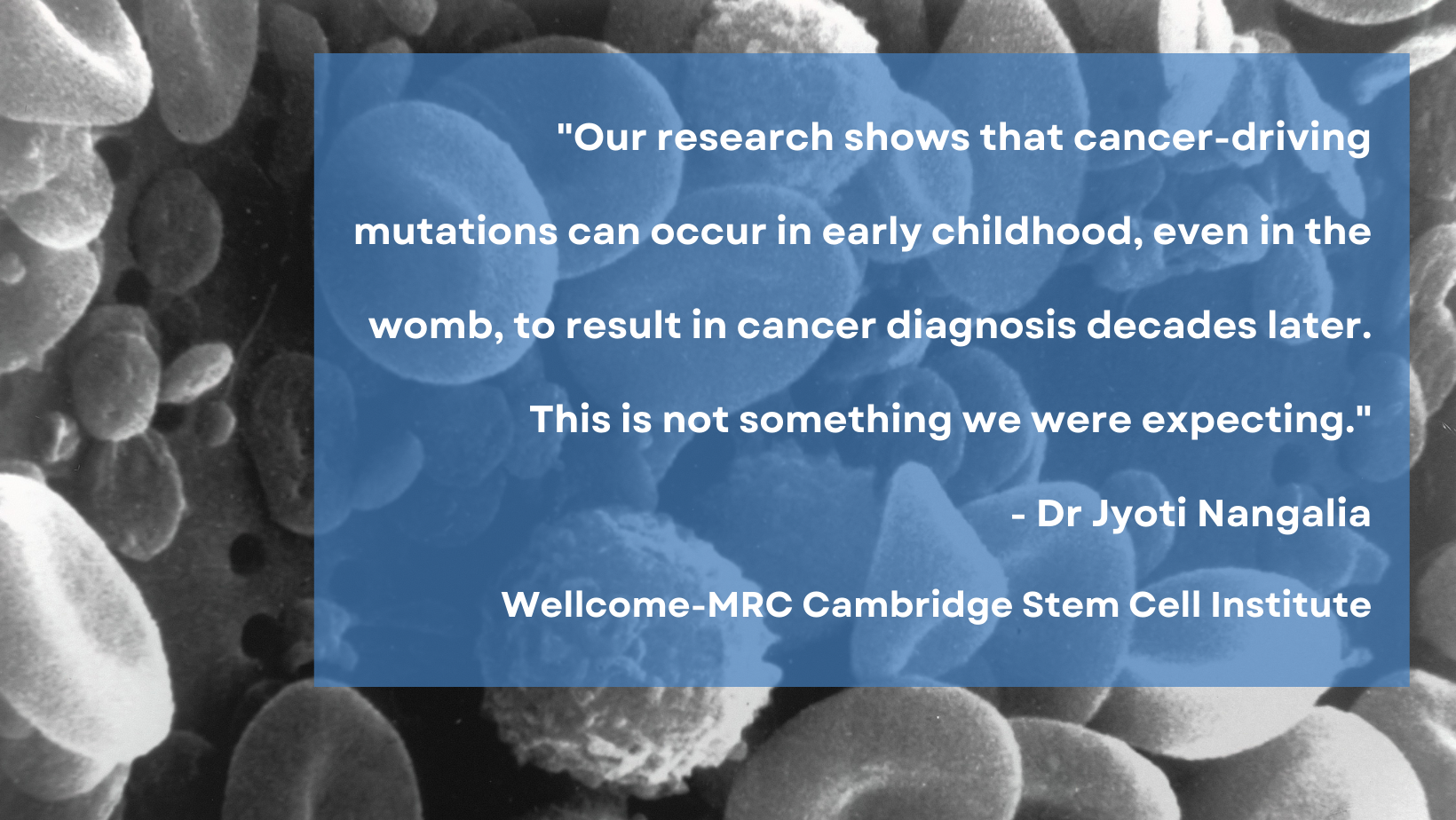
Submitted by Laura Puhl on Fri, 21/01/2022 - 15:45
Genetic mutations causing a type of adult blood cancer occur in childhood or even in the womb, new research has shown.
A new study from the Wellcome Sanger Institute and the University of Cambridge has traced these mutations to childhood, showing that they proliferate in the body over decades before cancer symptoms later in life.
The paper, published in January in Nature, suggests that these mutations will cause blood cells to multiply at different rates in different people, and those in whom these mutations cause faster growth have cancer symptoms appearing earlier. If these mutations proliferate slowly, it is possible that the cancer symptoms would never appear, or be noticed after death by other causes.
In the future, it might be possible to detect cancer warning signs earlier, potentially giving the opportunity to prevent or slow future cancer development.
Blood cancer is the fifth most common cancer in the UK and the third biggest cancer killer. More than 40,000 people are diagnosed with this disease every year. There are over 100 different types of blood cancer, and the risk increases with age, with just under 40 percent of people diagnosed being aged 75 or over1.
To better understand how blood cancer develops, scientists used whole genome sequencing technology of multiple blood cell clones from individual patients, along with in-depth genetic analysis of bone marrow and blood samples to establish the family history of individual blood cancers.
This allowed them to accurately estimate when the cancer-causing mutations actually occurred during a patient’s lifetime. Scientists studied 12 people between the ages of 20 and 81with myeloproliferative neoplasms − a type of cancer that causes stem cells in the bone marrow to produce too many blood cells, and performed whole-genome sequencing on over 1,000 clones derived from their blood cells. They then conducted targeted analysis of blood samples from the same individuals. This allowed them to time the mutations that cause the cancer and track how fast the cancer grew in individuals over their lifetime.
The researchers were able to trace the ancestry of different blood cells and estimate the time at which each patient acquired the mutations affecting the blood cells. They determined that in these 12 patients, the first cancer-linked mutations emerged as early as a few weeks after conception and up to age 12, despite cancer symptoms presenting decades later in life.
From here, they estimated how long over a patient’s lifetime it took for these mutated cells to multiply to the point where cancer symptoms became visible.
These findings suggest that some blood cancers are more of a gradual, lifelong process in which a single cell acquires a cancer-linked mutation early in life and then slowly grows over decades, compared to a mutation that happened only a few years prior to diagnosis.
Research is now needed to understand if how this information could be used to help predict cancer risk in individuals who have these mutations. In addition to early detection, research is also needed into whether current treatments or new therapies could be used to slow or prevent the development of cancer once a person is identified as ‘at risk’.
“Our research shows that cancer-driving mutations can occur in early childhood, even in the womb, to result in cancer diagnosis decades later. This is not something we were expecting. Blood cancer impacts thousands of lives every day and research such as ours into the timing and pace of how different cancers develop is crucial if we are going to find new ways to prevent these conditions. The success of our approach for tracking the origin and growth of this blood cancer could be applied to many other cancers and diseases.”
- Dr Jyoti Nangalia, senior author on the study from the Wellcome-MRC Cambridge Stem Cell Institute and Wellcome Sanger Institute

